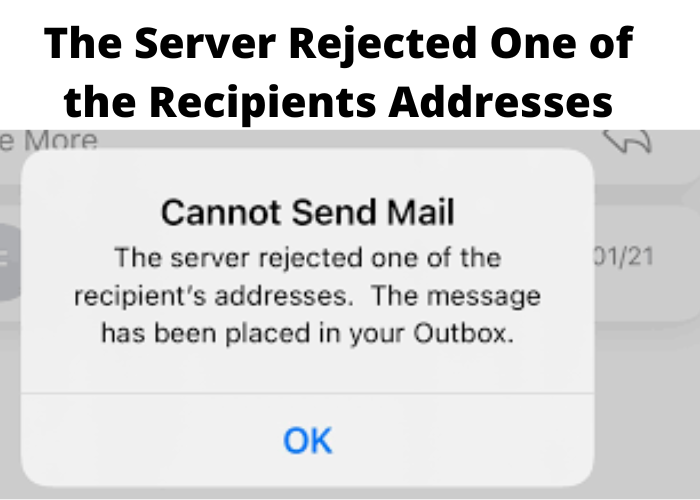Have you ever tried to send an email, but received a message that the email server had rejected one of the addresses? This can be frustrating, especially if you don’t know why your email was rejected. In this blog post, we’ll explore some of the reasons why an email server might reject an address and how to fix the problem.
The Recipient’s Email Address May Have Been Entered Incorrectly
Have you ever sent an important email only to have it bounce back with a message that the recipient’s address was incorrect? It’s frustrating, but it’s also quite common. There are a few things you can do to reduce the chances of this happening. First, always double-check the address before hitting send. Secondly, if you’re not sure of the address, try doing a quick search online. Often, you can find contact information for businesses and individuals with a simple Google search. Finally, if all else fails, you can always pick up the phone and give the person a call. A little extra effort up front can save you a lot of headaches later on.
The Recipient’s Mailbox May Be Full
Have you ever tried to send an email only to receive a message saying that the recipient’s mailbox is full? It can be frustrating, especially if you’re trying to send an important message. Fortunately, there are a few things you can do to fix the problem. First, try deleting some of the messages in your own mailbox. This will free up space and may allow your email to go through. If that doesn’t work, you can try sending the message as a text instead. Finally, if all else fails, you can always call the person you’re trying to reach and deliver the message over the phone. With a little patience and creativity, you can overcome this obstacle and ensure that your important messages get delivered.
The Recipient May Not Exist Anymore
It’s frustrating when you send an email and it bounces back with a message that the recipient doesn’t exist. It’s even more frustrating when you know that the person does exist, and you’re pretty sure you have the correct email address. So what’s going on?
There are a few possibilities. First, the email address might have been mistyped. This is especially common if you’re trying to email someone at a large company or organization where there are multiple people with the same name. Second, the person you’re trying to email may have changed jobs or otherwise switched email addresses. Third, the email address may no longer be active for any number of reasons – maybe the person closed their account, or maybe the account was suspended for violating spam rules.
If you’re getting persistent bounce-backs, your best bet is to try to contact the person another way – by phone or in person – and ask for their current email address. In the meantime, you can also try troubleshooting your own email account to make sure that everything is set up correctly.
The Email Server May Be Down
If you’re having trouble sending or receiving email, the email server may be down. To fix this problem, first check to see if your computer is connected to the Internet. If it is, then the next step is to check the status of the email server. Many email providers have a page where they list the current status of their servers. If the server is down, there’s not much you can do except wait until it comes back up. In the meantime, you can try using a different email provider or sending your messages through a web-based interface.
There Could Be a Problem With the Sender’s Email Address
If you’re having trouble sending or receiving email, one of the first things you should check is the email address you’re using. If you’re getting an error message that says the address is invalid, it’s possible that you’ve mistyped it, or that the address has changed and you don’t have the new one. It’s also possible that the email service you’re using (such as Gmail, Yahoo, or Outlook) is experiencing an outage. You can check the status of major email providers on their websites or by doing a search for “email down.” If none of these seem to be the problem, there could be an issue with your computer’s email settings. For example, if you’re using an email client like Microsoft Outlook, make sure that the server settings are correct. You can find instructions for changing these settings on the support website for your email provider. With a little troubleshooting, you should be able to get your email up and running again in no time.

